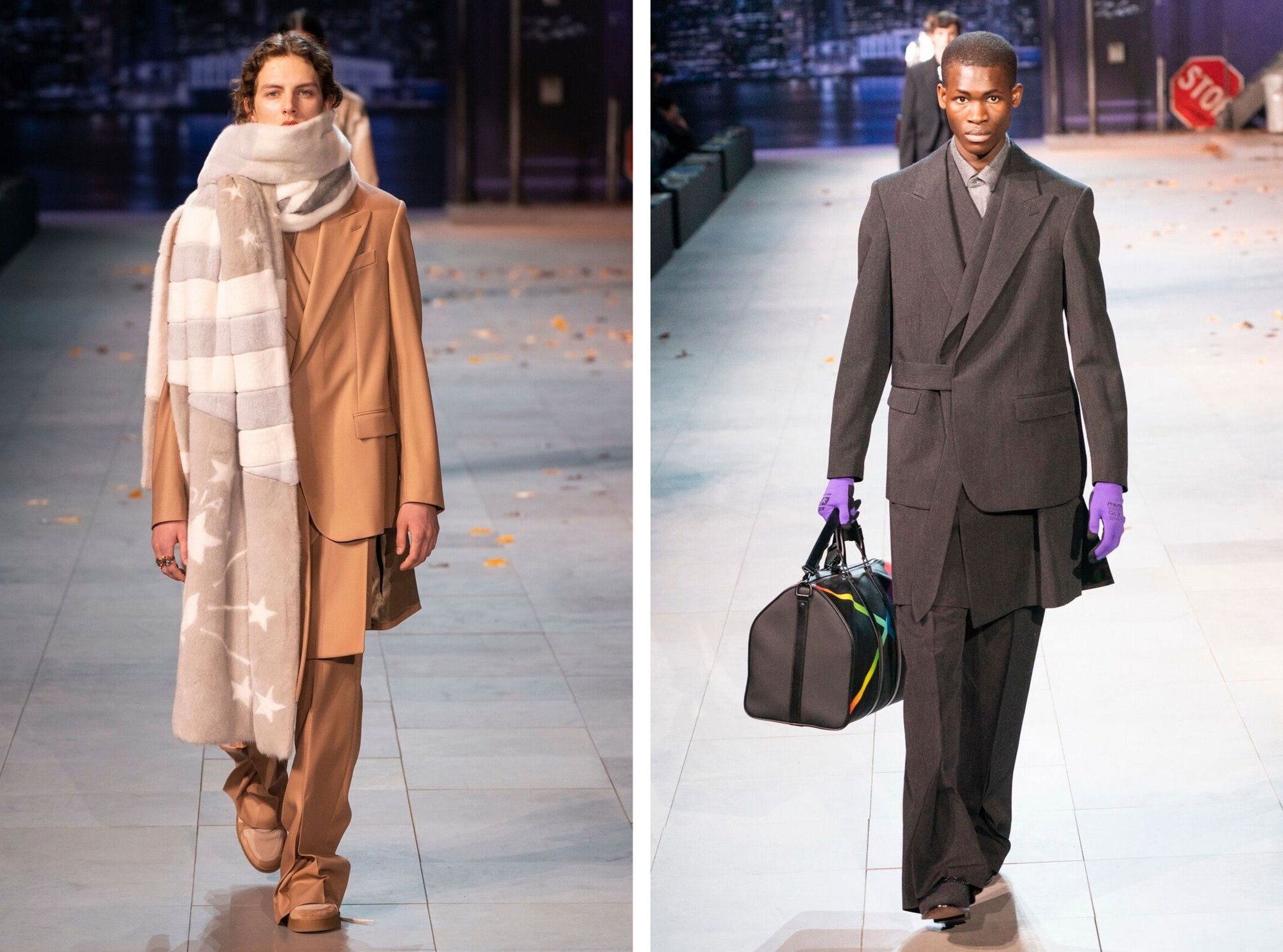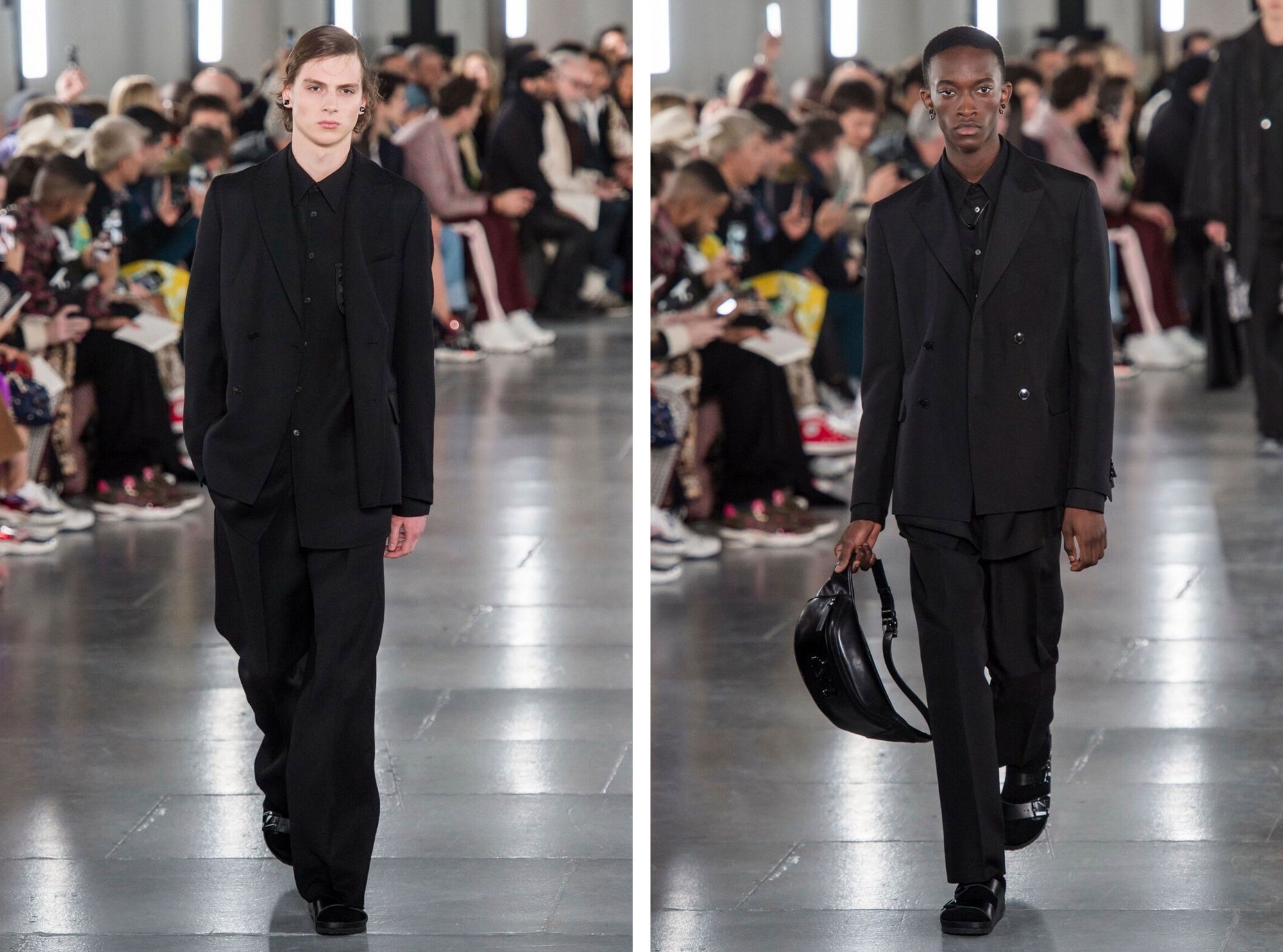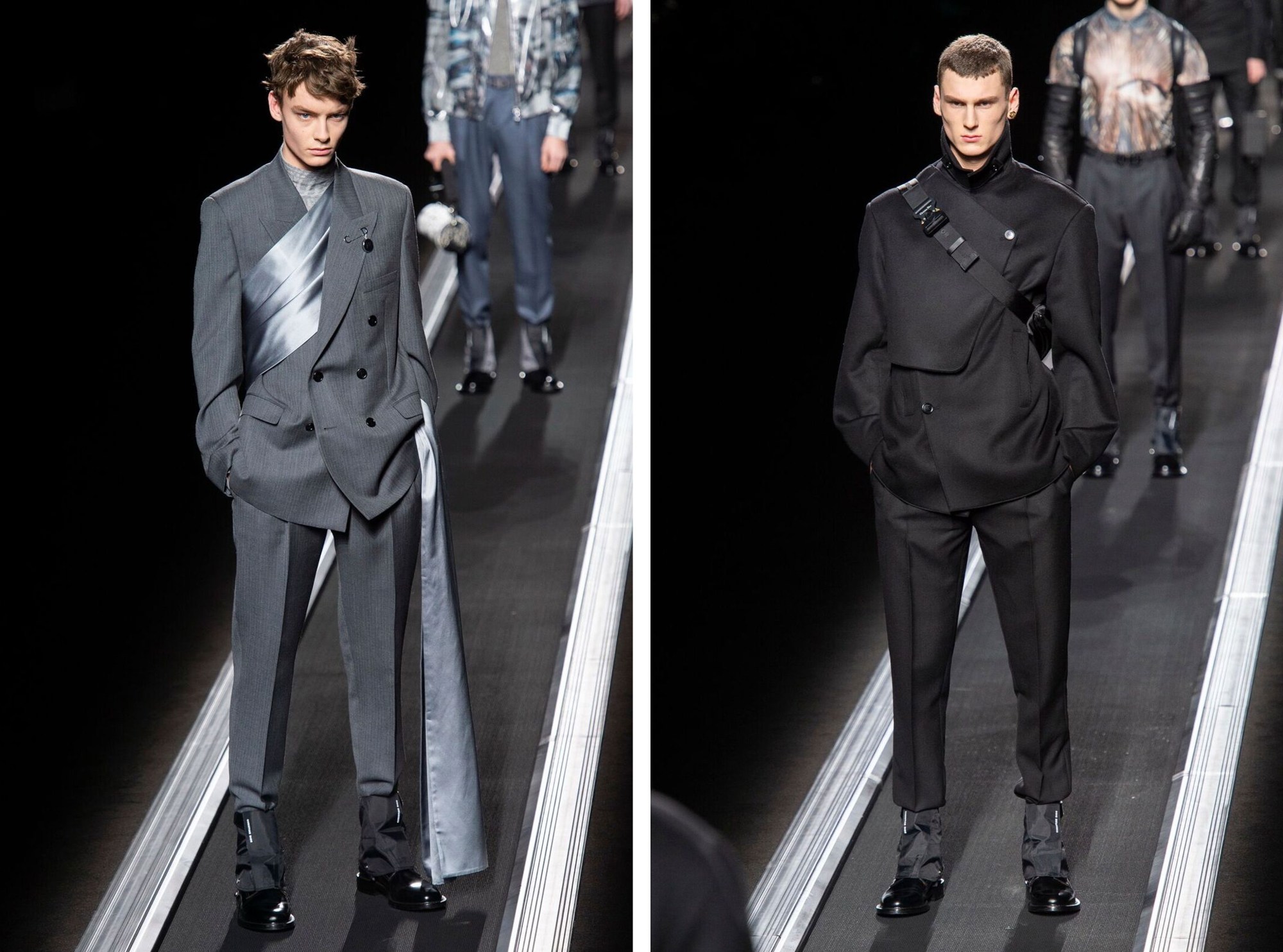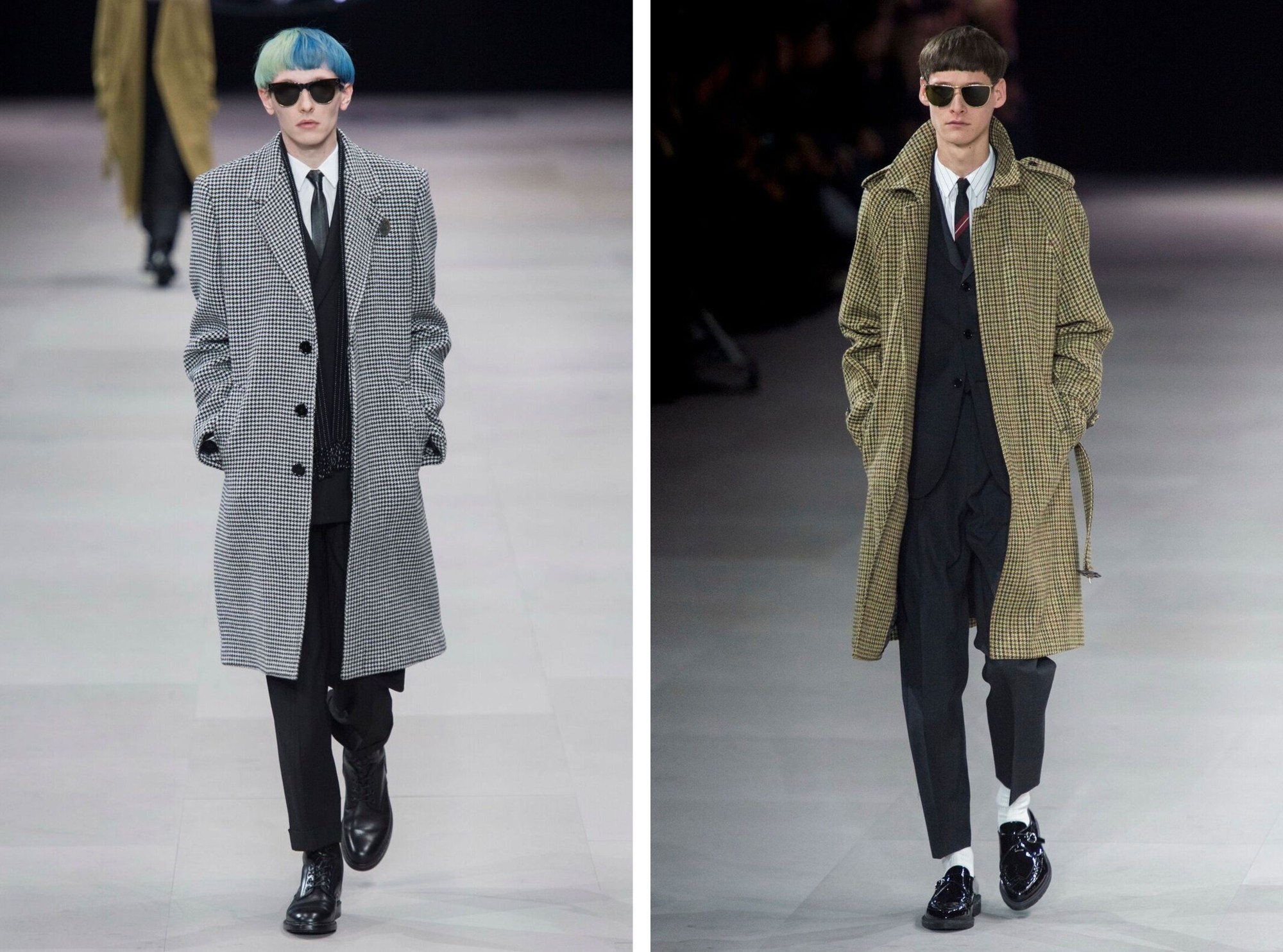So that’s it for streetwear then? Haven’t you heard? Fashion’s new mood is a classical mode. Tailoring is back. Chuck out your sweatpants and slip into some proper trousers. Chuck out your Chuck Taylors and polish up your loafers. If you’ve been following the autumn/winter 19 menswear shows in Paris you’ll have noticed the preponderance of suits and absence of identikit logo hoodies and boring baseball caps. Menswear is feeling all grown up, getting serious, dressing for business.
Streetwear had been the dominant fashion silhouette of the last few years — the uniform of a global army of hypebeast consumers from Singapore to Seoul, LA to London. But in becoming so dominant it became almost exactly what it first set out against. What does luxury streetwear mean in a fashion context anymore? What’s the point? Where’s the craft? It feels like the streetwear thing reached a peak on the catwalk — a tipping point, market saturation, and now the pendulum is swinging back again. Fashion, after all, thrives on newness, and streetwear isn’t new anymore.
Streetwear began as a ground-up DIY movement, clothes for surfers and skaters and punk teens. A reaction against the boring professionalism and exclusivity and expense of luxury fashion. It instead favoured rawness, attitude, creativity, community. It was for us, by us. But now, subsumed by the larger fashion industry it too became boring, professional, “high quality”. A look rather than an attitude or an ideology. A £1000 cotton hoody. No creativity, no community. Streetwear became a victim of its own success, its own dominance. It was once a reaction against an establishment, and then it became the establishment. And now, all of sudden, the suit — that oldest, most boring staple — feels revolutionary again.

The relationship between the luxury fashion industry and streetwear has been fraught and in flux for the last year. A period of soul searching that was brought on by Virgil Abloh, streetwear’s renaissance man, ascending to the throne at Louis Vuitton, the luxury fashion industry’s most luxury of brands. And compounded by a boredom not just with streetwear’s basicness, but ugly fashion in general, and the associated rise of gimmicky clothing.
Raf Simons pointed to this new feeling bubbling up in menswear last year, complaining of a boredom with streetwear, a need to move on. “We need a new outline, a new shape,” he explained after his spring/summer 19 show. “There are too many hoodies with prints out there. Something needs to shift.” That shift comes in the form of a freer suit, almost released from the strictures of work, its rituals of masculinity. It is informed by the ease and comfort of streetwear. It feels new, rather than archaic. The suit updated, tailored for a new fashion youth raised on a steady diet of streetwear, but now growing up, wanting to look like grown-ups. Much was made of a generation of older designers chasing the millennial pound, and maybe they still are. The suit is tied to certain events in life; work, funerals, marriages. You can’t wear a Vetements ‘You Fuck’n Arsehole’ T-Shirt a job interview. But equally, you don’t want to wear some trash from Moss Bros.
Virgil has been using his new platform to push tailoring as part of his fashion language. Even if this is tailoring still informed by his roots in streetwear. There’s a bagginess and looseness to jackets and trousers that favours relaxation as much as formality. He drew inspiration from Helmut Lang to find a bridge between streetwear’s attitude and luxury’s finesse. He carried this over into his second season, a collection that took a series of grey suits in various layers and states of deconstruction as its starting point.

But maybe we can trace the seeds of the streetwear-luxury endgame further back still, to Demna Gvasalia’s first Balenciaga menswear for spring/summer 17, a thrilling collection of strangely shaped tailoring of alienating proportions that elongated and wrapped around the body. It was kind of kinky in it strangeness, but it was a youthful, outsider-led attack on the work suit, a reappropriation of the formality into something fetishistic. But it was ahead of its time. Fashion’s streetwear obsession was only really just getting started. The Triple-S wasn’t even a twinkle in Demna’s eye yet, but at Balenciaga in the last few seasons Demna has explored the stranger edges and avant-garde possibilities of tailoring. The designer who did so much to popularise streetwear within fashion has always found the suit to be full of incredible potential.
The difference, maybe, during this autumn/winter 19 season, is that it is a vision of tailoring that feels a lot more grown up. More expensive and less existential. Things that felt out, old, passe, this season; hyperactivity, influencers, big stupid prints, big stupid logos, hoodies, neon colours, ugly sneakers. It was a pivot away from Gen Z / Millennial hype towards a sober, bourgeois feeling; there was plenty of grey, beige, cashmere, leather, subtlety. The standout shows of Paris — Dior, Valentino, Dries Van Noten, Celine — seemed to push the focus entirely onto the clothes. Their beauty, their wearability, their formal power, their romance even.
The opening look of the Dries’ show, for example, was a loose white shirt, fabulous in its unassuming averageness, a very self-effacing, just-right, white shirt. No strange details, weird pockets, unnecessary extras, no frills or flounce. He paired it with a standard dark grey tie, and a pair of loose, belted trousers. It takes confidence to show something so simple. The focus throughout the rest of the collection was on the wearable and the sensible, but also the eternal power these kinds of clothes can carry when done well, made with love and craft and skill. Skill enough in fact to incorporate flashes of flamboyant paisley and tie-dye without feeling tacky. It was a masterclass of composure and comportment.

But throughout this Paris season this focus on tailoring was also tempered, post-streetwear, with a new ease, rather than a return to a suit’s traditional strictness. This wasn’t a suit as Savile Row armour, but as something to slip into, be comfortable in. The suit liberated from the backs of the identikit hordes of City Boys, estate agents and the like. A suit as something soft, freed almost from masculinity. Like few other items in a man’s wardrobe, the suit has a total transformative power. It can just as easily turn you into a bore or a dandy.
Pierpaolo Piccioli referenced part of this at Valentino; how do you convince those comfortable in the hoodie that they can also be comfortable in the formal? What about the merit of the shoe over the sneaker? (The compromise for Pierpaolo was the sock and Birkenstock worn with the suit.) There were dashes of influencer eye-candy here sure — big, space age psychedelic prints of Edgar Allan Poe, an Undercover collaboration, some chunky trainers — but strip that away and you’re left, like at Dries, with a collection of wearable, comfortable, interesting suiting and tailoring.
The most exciting development for the future of the suit might just involve Kim Jones at Dior. Long renowned as a designer able to expertly judge What Men Want and able to accurately sound out the mood of times, he presented a collection almost entirely composed of tailoring and suiting. Kim is revelling in the possibilities offered him by the use of Dior ateliers, and Dior’s history (primarily Christian Dior himself, but also the work of Yves Saint Laurent and John Galliano at the house) but he is marrying it to his own heritage, his roots in London, the energy and newness of streetwear when he was working at Gimme 5 with Michael Kopelman. This season’s punk illustrator Raymond Pettibon sat comfortably up against a dress by Christian Dior from 1955 as Kim’s inspiration; it was equal parts romantic and tough, elegant and hard.

What Kim hasn’t done at Dior is look to the legacy of Hedi Slimane. But Hedi Slimane’s debut menswear show for Celine might just have been the pièce de résistance of the whole tailoring-obsessed season. Hedi had drawn criticism from some parts for his Celine debut last season, which did away with much of the mood Phoebe Philo had cultivated in her tenure at the house. This felt like a riposte, a fantastic display of exactly what Hedi does best. If that criticism around his debut centred on the change at Celine, and the Philophile’s love for a woman who designs clothes for real, intelligent women to wear, here Slimane designed a collection that seemed to cater for exactly what men want to wear.
In cut it was a little baggier, maybe, than the ultra-slim Slimane stereotype. Suits formed the backbone of the collection. The trousers were shorter, a flash of white sock. But it was an exhibition of Hedi’s ability to turn a historical influence — London musical subculture was the root here; 2 Tone, Mod, Skinhead, Beatlemania, Post-Punk, New Wave — into something that felt exciting, desirable, wantable, wearable. Everything he’s so good at. Not, of course, that his look has changed much, just that the times have come back into sync with him. At Dior Homme and Saint Laurent, Hedi managed to mark out distinctive eras of dressing men. This Celine show could help usher in another: menswear post-streetwear.

Credits
Photography @Mitchell_Sams
